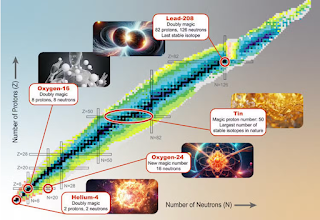 |
Ben 10 Ultimate Alien: Xenodrome is a fighting
mobile game that was released on mobile devices. |
This post has nothing to do with the above mentioned game instead I noticed that the number associated with my diurnal age today, 27594, has no repeating digits and I wondered if there was a word to describe such a number. Well, the OEIS uses the term "xenodrome" and, in base 10, there are 8,877,691 of them with the first being 0 and the last being 9,876,543,210. These numbers form OEIS A010784. Numbers of this sort are not listed in Numbers Aplenty. In the range up to 40,000, there are 14,346 xenodromes.
With so many numbers, it's best to apply some sort of sieve and one that comes to be mind is the metadrome, a number in which the digits are in strictly increasing order. If we look at numbers that are both xenodromes and metadromes in the range up to 40,000, we find that there are only 375 of them:
1, 2, 3, 4, 5, 6, 7, 8, 9, 12, 13, 14, 15, 16, 17, 18, 19, 23, 24, 25, 26, 27, 28, 29, 34, 35, 36, 37, 38, 39, 45, 46, 47, 48, 49, 56, 57, 58, 59, 67, 68, 69, 78, 79, 89, 123, 124, 125, 126, 127, 128, 129, 134, 135, 136, 137, 138, 139, 145, 146, 147, 148, 149, 156, 157, 158, 159, 167, 168, 169, 178, 179, 189, 234, 235, 236, 237, 238, 239, 245, 246, 247, 248, 249, 256, 257, 258, 259, 267, 268, 269, 278, 279, 289, 345, 346, 347, 348, 349, 356, 357, 358, 359, 367, 368, 369, 378, 379, 389, 456, 457, 458, 459, 467, 468, 469, 478, 479, 489, 567, 568, 569, 578, 579, 589, 678, 679, 689, 789, 1234, 1235, 1236, 1237, 1238, 1239, 1245, 1246, 1247, 1248, 1249, 1256, 1257, 1258, 1259, 1267, 1268, 1269, 1278, 1279, 1289, 1345, 1346, 1347, 1348, 1349, 1356, 1357, 1358, 1359, 1367, 1368, 1369, 1378, 1379, 1389, 1456, 1457, 1458, 1459, 1467, 1468, 1469, 1478, 1479, 1489, 1567, 1568, 1569, 1578, 1579, 1589, 1678, 1679, 1689, 1789, 2345, 2346, 2347, 2348, 2349, 2356, 2357, 2358, 2359, 2367, 2368, 2369, 2378, 2379, 2389, 2456, 2457, 2458, 2459, 2467, 2468, 2469, 2478, 2479, 2489, 2567, 2568, 2569, 2578, 2579, 2589, 2678, 2679, 2689, 2789, 3456, 3457, 3458, 3459, 3467, 3468, 3469, 3478, 3479, 3489, 3567, 3568, 3569, 3578, 3579, 3589, 3678, 3679, 3689, 3789, 4567, 4568, 4569, 4578, 4579, 4589, 4678, 4679, 4689, 4789, 5678, 5679, 5689, 5789, 6789, 12345, 12346, 12347, 12348, 12349, 12356, 12357, 12358, 12359, 12367, 12368, 12369, 12378, 12379, 12389, 12456, 12457, 12458, 12459, 12467, 12468, 12469, 12478, 12479, 12489, 12567, 12568, 12569, 12578, 12579, 12589, 12678, 12679, 12689, 12789, 13456, 13457, 13458, 13459, 13467, 13468, 13469, 13478, 13479, 13489, 13567, 13568, 13569, 13578, 13579, 13589, 13678, 13679, 13689, 13789, 14567, 14568, 14569, 14578, 14579, 14589, 14678, 14679, 14689, 14789, 15678, 15679, 15689, 15789, 16789, 23456, 23457, 23458, 23459, 23467, 23468, 23469, 23478, 23479, 23489, 23567, 23568, 23569, 23578, 23579, 23589, 23678, 23679, 23689, 23789, 24567, 24568, 24569, 24578, 24579, 24589, 24678, 24679, 24689, 24789, 25678, 25679, 25689, 25789, 26789, 34567, 34568, 34569, 34578, 34579, 34589, 34678, 34679, 34689, 34789, 35678, 35679, 35689, 35789, 36789
If we were to consider katadromes instead of metadromes, then in the range up to 40,000 the highest number can only be 9876 so that's a little too restrictive. Katadromes are numbers in which the digits are in strictly decreasing order. See blog posts Metadromes and Katadromes.
Of course numbers can be xenodromes in other bases and 27594 serves as a good example because not only is it a xenodrome in base 10 but also in bases 8, 9, 11 and 12 and others as well no doubt:$$ \begin{align} 27594_{10} &= 41760_{\, 9} \\&= 65712_{\, 8} \\&= 19806_{11} \\&= 13b76_{12} \end{align}$$
















